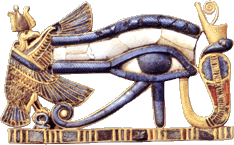
The Looping Technique
By
Johnie
H. Scott, M.A., M.F.A.
Associate
Professor of Pan African Studies
Background:
In
writing, we have three primary stages: the creating stage wherein
ideas are first generated and/or tossed around, the shaping stage
in which those ideas are fashioned into outline and then rough draft (i.e.,
first draft) form, and finally the completing stage in which the
polishing and/or editing takes place so that we emerge with the finished
product. Each of these distinctly separate stages of writing is a task unto
itself. This movement or process-oriented approach back and forth between the
three stages as you go from generating ideas and notes to outlining and
preparing that rough draft onto editing and then finalizing a polished draft is
known as being recursive (i.e., the movement among the stages of
writing).
It
is within the first stage – Creating – that the experienced,
disciplined writer is able to rise above those annoying distractions and obstacles
brought on by writer’s block which so often will stymie the young,
inexperienced student writer. This is because the disciplined writer is aware
of and has mastered the repertoire of various creating techniques available.
Those techniques are found under three distinct categories dependent upon the
nature of the writing task: (1) the Simple techniques that
include, among others, free writing, brainstorming, clustering, mapping,
listing, chaining and the Reporter’s Formula; (2) the Expanded
techniques which include looping, cubing, track-switching and Classical
Invention; and (3) the Enhanced techniques of Reading and
Research (i.e., R&R) and Noticing Inside Purpose. For a more in-depth
discussion of these techniques, consult Elizabeth Cowan-Neeld’s
excellent Writing (Scott, Foresman and
Company). For many, knowledge of these techniques ended in that Senior
Composition course during high school where the instructors covered one or more
of the simple creating techniques. Those in AP courses may have been given the
majority of the simple techniques. In either instance, none of the expanded or
enhanced techniques were presented to the student.
As
you progress in writing skill and ability – more a matter of simply moving on
to college and Freshman Composition -- you are next exposed to the second or
expanded techniques of creating. There are four (4) of these as mentioned
earlier. Each of the four is as different from the other as they are more
detailed and involved than those found under the simple category of generating
ideas. We will concern ourselves in this instance with the first of those
expanded techniques: looping.
Description:
For
those familiar with maintaining journals (or what has been referred to in some
quarters as “learning logs”), I have a definitive method in preparing the
entries. That method involves, first of all, listing the topic that is to be
explored. The writer then writes nonstop for a period of at least ten (10)
minutes. During that time, all mental processes are focused on generating ideas
related to the subject. Once time is up, the writer skips a line and writes the
following phrase: “Center of Gravity.”
This
“Center of Gravity” is a single, complete sentence containing a subject and a
verb. It is never a fragment, deliberate or otherwise. This “Center of Gravity”
sentence is only written after the writer has reread the actual journal entry
and decided upon what it is that stands out as the main idea
or major point that emerged during the writing. That main idea or point
becomes the actual “Center of Gravity” sentence and anyone reading this
particular sentence should be able to grasp the core theme of the journal
entry.
Ex.
Subject:
“Reflections on The Color Purple”
Center
of Gravity: The Color Purple presents one of the strongest images of
African-American women in world literature with the character named Celie.
When
one prepares to do the Looping Technique, once again the subject or topic is
listed first of all. This may be the title of a poem, short story, book,
television program, play, motion picture, or person. It might be a theme or
question (e.g., “What Was the Last Book I Read Strictly for Pleasure?”). After
listing the subject, you then write “
While
writing, you do not concern yourself with spelling, grammar or mechanics: nothing that will interrupt the flow of thought and
creativity. Those are concerns that only become important later with the actual
writing of the composition. At the end of the 3-5 minute time period, you stop.
Skipping a line, one then writes the phrase “Center of Gravity Sentence #1.”
This, too, is a single complete sentence containing a subject and verb that
extrapolates the main idea or point represented in that loop. Up until this
point, excepting the time involved (i.e., 3-5 minutes
rather than 10 minutes), you have prepared a miniaturized version of the
technique used in journal writing.
With
Looping, however, the practice is to generate not one, but three such entries.
For the second loop – identified as
Now
that you have this COG#2, you write “
 Horus, the All-Seeing Eye
Horus, the All-Seeing Eye